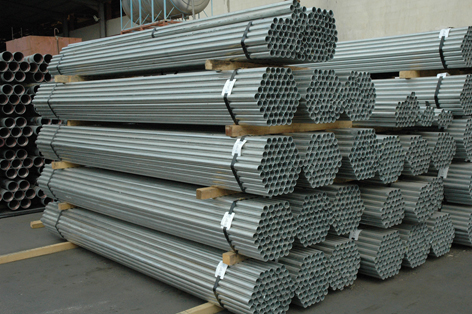At the Arab Steel Summit 2010 in Marrakech, Morocco, SteelOrbis had the chance to talk with Hany A. Hady Ibrahim Procurement Director of Rajhi Steel, regarding his views on the general market outlook and the recent steel import decision for steel in Saudi Arabia.

What is your general sentiment regarding the outlook for today's market?
We believe that the market is recovering in some areas of the world, specifically the Far East and Middle East due to high GDP rates and stimulus plans supported by governments. In Europe and the US the situation is a bit different as the economy still under pressure and requires longer time for recovery.
Which markets do you think will shine as potential buyers?
Saudi Arabia and Abu Dhabi will be the leading markets in the area. Iraq could gain more importance after the elections and with the stability of the political situation. The Egyptian market will not lead this year due to the current political situation and the elections for parliament and the presidency.
What do you think about the current situation in the Middle East market? Do you foresee any demand revival happening in the region soon?
Demand in this region was never actually affected in Saudi Arabia and Abu Dhabi for example, while the most affected market was Dubai. This year, and with the current oil prices ranging around US$80, the possibility for an increase in demand is very high as most of the Gulf countries structure their own budget based on a very conservative figure of around US$45 per barrel. Again, GCC countries are injecting huge funds into infrastructure projects and that will lead to an increase in steel demand in the area.
Could you tell us about the current production activities of your company?
Our current activities include production of rebar, welded pipes & tubes for construction activities, corrugated sheets and sandwich panels. We produce 800,000 mt per year of rebar from 10 to 40 mm Gr60 according to ASTM A615 standard. Our yearly output of round welded pipes and square welded tubes from 0.5" up to 7" is an average 120,000 mt, while our output of corrugated sheets, panels and pre-painted sheets reaches an average of 50,000 mt per year. We are the third largest steel producer in the Saudi market.
We know that you are using HBI or scrap as raw materials depending on the price situation. Could you comment on your use of these raw materials? Also, where do you source your scrap?
Currently, we are very dependent on local scrap supplies as the price is very competitive compared to the international market. Scrap exporting is prohibited by the government and that enables us to secure most of our requirements from the local market. HBI is used in small quantities (only 10% of the mix) to improve the quality.
What is your view about the Far East demand for scrap? How do you see the situation in ex-US scrap?
I think scrap availability has been badly affected since mid 2008 due to the slowdown in construction and manufacturing activities. Nowadays the demand for final products has improved and hence the demand for scrap has also increased. I think the scrap price will continue to rise until the mills have built up their own stocks, until weather conditions in Europe and the USA improve and demand for scrap returns to normal levels.
It is known that exports play an important role in the overall marketing activities of RAJHI STEEL. Please tell us about your export activities.
Due to the high jumps in steel prices at the time, since April 2008 the local authorities have blocked export activities for both rebar and scrap. Since then, we only export commercial steel products (pipes, tubes, sheets,..) to neighboring markets like Yemen, Iraq, and Kuwait.
At the beginning of 2010 Saudi Arabia re-imposed five percent customs duties on steel imports that had been placed on hold for the last two years. How has this decision affected your recent sales?
I believe this decision has not affected the market too much as last year - for example - we did not see any rebar imports in absence of the custom duties.
Closing the first quarter of 2010, what is your general view regarding the first quarter and what do you expect from the rest of the year?
The first quarter was very good in terms of demand and sales. I expect the 2nd quarter to be better but the third quarter might be slower due to the summer vacations and the Ramadan season, while construction activities also normally slow down during the quarter in question.